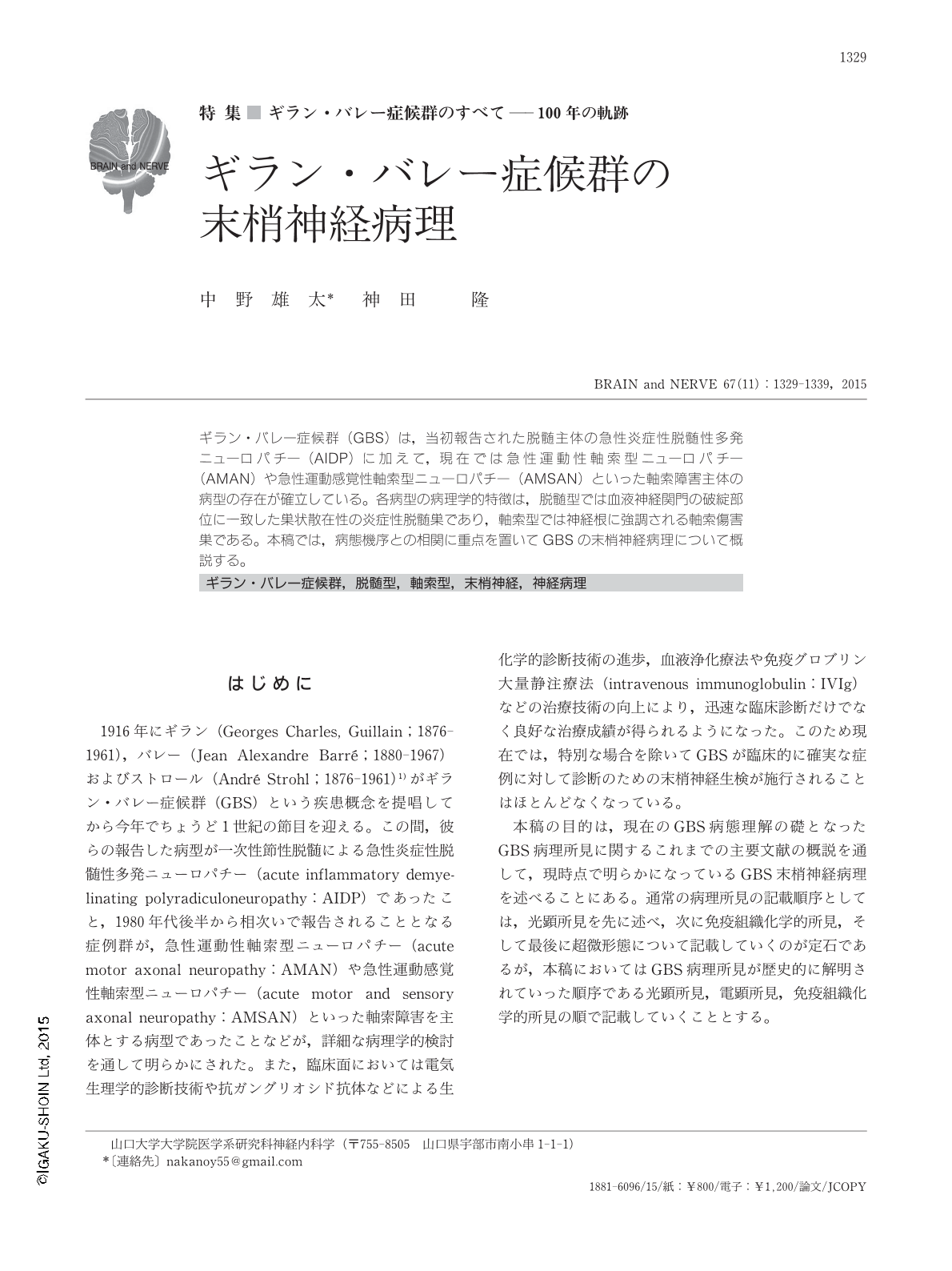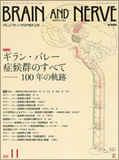Japanese
English
- 有料閲覧
- Abstract 文献概要
- 1ページ目 Look Inside
- 参考文献 Reference
ギラン・バレー症候群(GBS)は,当初報告された脱髄主体の急性炎症性脱髄性多発ニューロパチー(AIDP)に加えて,現在では急性運動性軸索型ニューロパチー(AMAN)や急性運動感覚性軸索型ニューロパチー(AMSAN)といった軸索障害主体の病型の存在が確立している。各病型の病理学的特徴は,脱髄型では血液神経関門の破綻部位に一致した巣状散在性の炎症性脱髄巣であり,軸索型では神経根に強調される軸索傷害巣である。本稿では,病態機序との相関に重点を置いてGBSの末梢神経病理について概説する。
Abstract
Guillain-Barré syndrome is composed of two distinct clinicopathological entities: acute inflammatory demyelinating polyradiculoneuropathy (AIDP), and acute motor or motor and sensory axonal neuropathy (AMAN and AMSAN). AIDP is characterized by the patchily distributed demyelinative foci throughout the peripheral nervous system (PNS), whereas in AMAN/AMSAN primary axonal degeneration is observed in the PNS, particularly accentuated at the spinal nerve roots. The aim of this article is to provide an overview of previous findings regarding GBS pathology and thus, to elucidate the pathomechanisms of this life-threatening disorder. The most critical cause for AIDP may be the autoimmune attack on the Schwann cell membrane wrapping the myelinated nerve fibers, and that in AMAN/AMSAN may be an antibody-mediated attack on the axolemma at the nodes of Ranvier.

Copyright © 2015, Igaku-Shoin Ltd. All rights reserved.


